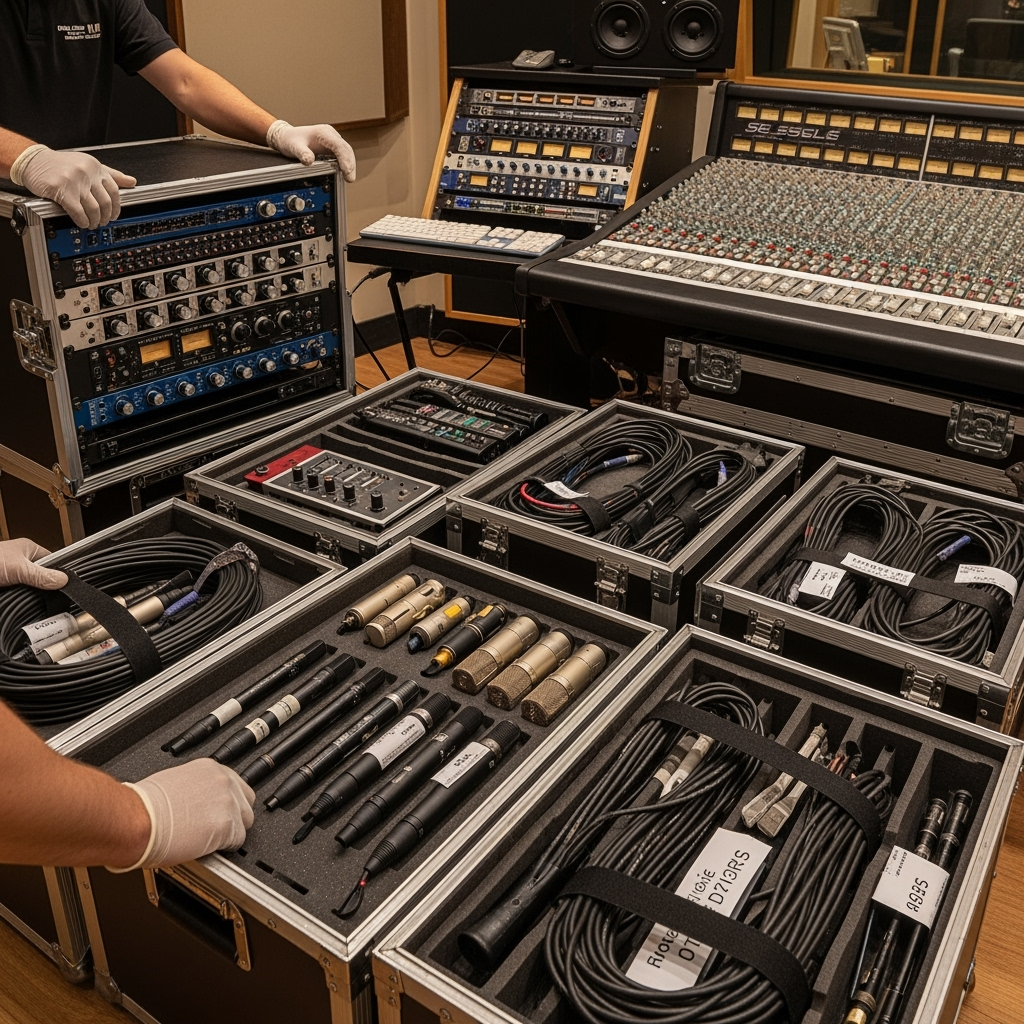Why Proper Storage Matters for Studio Equipment
For music producers, recording engineers, and studio owners, professional audio equipment represents not just a significant financial investment, but the very tools of their trade. Whether you’re relocating your studio, renovating your space, or need temporary storage between projects, protecting this sensitive equipment requires careful planning and the right storage environment.

Understanding Climate Control Requirements
Professional studio equipment is highly sensitive to environmental conditions. Temperature fluctuations, humidity, and dust can all potentially damage expensive components. Here’s what you need to know about climate-controlled storage for your gear:
- Maintain consistent temperature between 65-75°F (18-24°C)
- Keep relative humidity between 45-50%
- Ensure proper air circulation to prevent moisture buildup
- Protect from dust and debris with appropriate covers
Essential Packing and Protection Techniques
Proper packing is crucial for protecting your studio equipment during storage. Follow these professional guidelines for maximum protection:
- Use original packaging whenever possible
- Invest in high-quality road cases for larger items
- Apply appropriate padding and shock absorption
- Implement proper cable management and labeling
- Keep detailed inventory records with serial numbers

Organizing Your Storage Unit
Strategic organization of your storage unit can make a significant difference in protecting your equipment and maintaining easy access when needed:
- Create clear aisles for access to all equipment
- Store heavier items on lower levels
- Keep frequently accessed items near the front
- Use shelving systems to maximize vertical space
- Maintain proper ventilation around equipment
Special Considerations for Specific Equipment
Microphones and Preamps
These sensitive pieces require extra care:
- Store microphones upright to prevent moisture collection
- Use desiccant packets in storage containers
- Keep vacuum tubes in separate, padded containers
- Maintain original foam inserts for shock protection
Monitors and Speakers
Protect your speakers with these specific measures:
- Cover drivers to prevent dust accumulation
- Store upright to protect woofers
- Use speaker covers or bags designed for long-term storage
- Keep away from magnetic fields
Mixing Consoles and Control Surfaces
Preserve your mixing equipment with these steps:
- Cover faders and knobs to prevent dust infiltration
- Use support bars to prevent chassis flex
- Keep power supplies separate but labeled
- Document all connection configurations
Regular Maintenance During Storage
Even in storage, your equipment needs regular attention to maintain its condition:
- Monthly visual inspections for any signs of moisture or damage
- Quarterly power-up of electronic components (when possible)
- Regular cleaning of storage area to prevent dust buildup
- Monitoring of climate control system performance
Insurance and Documentation
Protect your investment beyond physical storage with proper documentation:
- Maintain detailed inventory lists with photos
- Keep serial numbers and purchase receipts accessible
- Verify insurance coverage for stored equipment
- Document storage unit climate control specifications
Preparing for Future Use
When it’s time to bring your equipment back into service, follow these steps:
- Allow equipment to acclimate to room temperature before powering on
- Check for any signs of damage or deterioration
- Test equipment thoroughly before full deployment
- Update your inventory and maintenance records
Professional Storage Solutions
Consider these professional storage options for maximum protection:
- Climate-controlled storage units with 24/7 monitoring
- Professional moving services specializing in studio equipment
- Custom storage solutions for unique pieces
- Security systems with cameras and controlled access
Conclusion
Proper storage of professional studio equipment is essential for protecting your investment and ensuring your gear remains in optimal condition. By following these guidelines and maintaining appropriate climate control, you can preserve your equipment’s value and performance for years to come. Remember that the cost of proper storage is minimal compared to the potential cost of replacing damaged equipment.










Leave a Reply